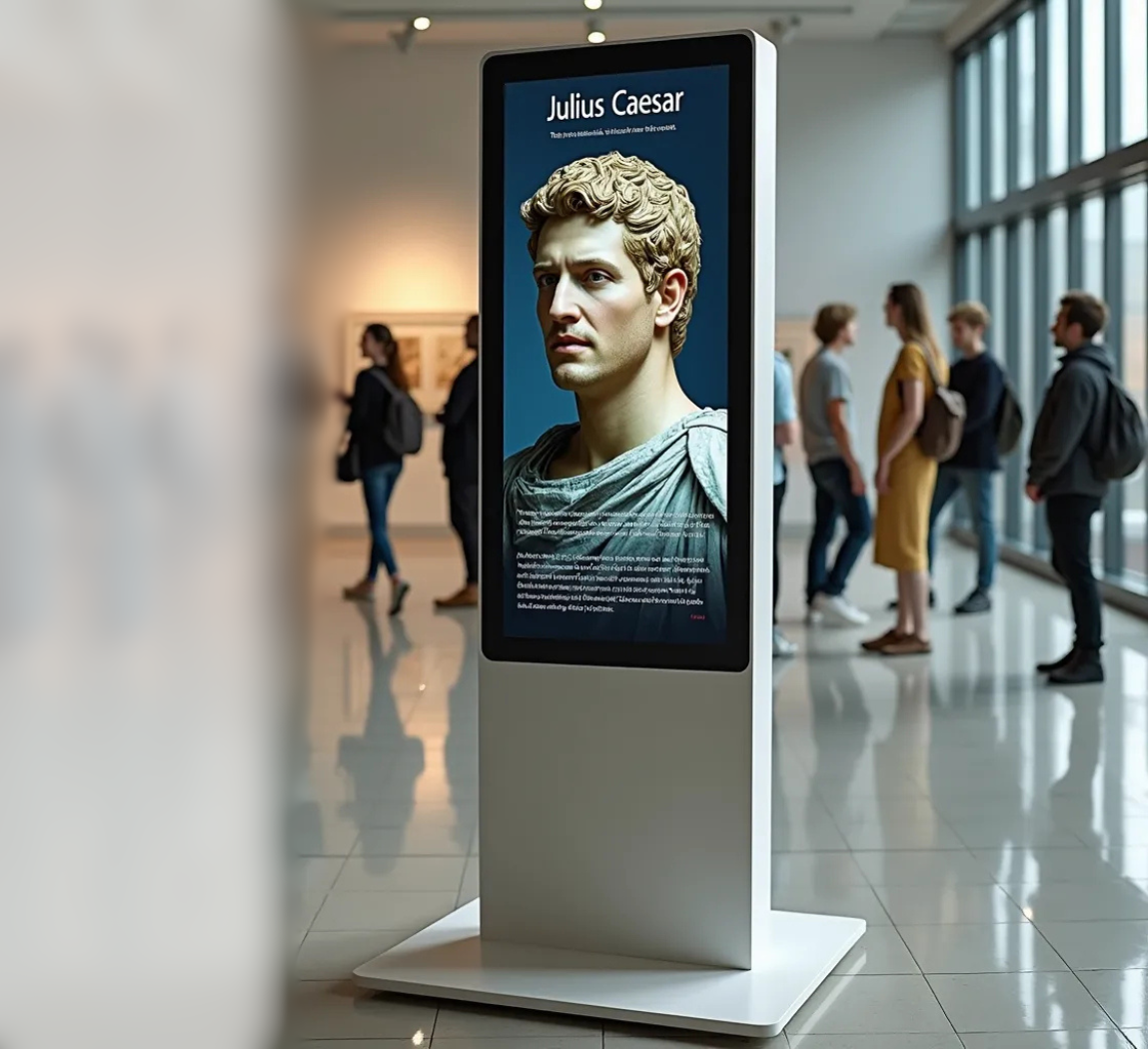Interactive AI Avatars: Breathing New Life into Historical Figures
Published: 01 July 2025 | AI, Avatars, Heritage

Table of Contents
1. Why Avatars—and Why Now?
The AI-avatar market is exploding: valued at USD 0.8 billion in 2025 and forecast to hit USD 5.93 billion by 2032 (CAGR 33 %). Museums are early adopters—moving beyond audio guides toward two-way, real-time dialogue.
2. A Quick Timeline of Milestones
| Year | Milestone | Tech Driver |
|---|---|---|
| 2023 | TimeLooper hologram of Anne Frank debuts in Amsterdam | Multi-turn LLM + depth-camera volumetric capture |
| 2024 | Palace of Versailles pilots Ask-Mona "talking statues" | Cloud LLM, QR onboarding |
| 2025 Jan | Frederick Douglass hologram launches in Boston | Closed AI trained on autobiographies |
| 2025 Apr | University of Salamanca reveals Miguel de Unamuno avatar prototype | 2D/3D blend + text-to-speech |
| 2025 Jun | 20 statues at Versailles go fully live in seven languages | Multilingual GPT-4o + vector RAG |
3. Anatomy of an AI Avatar
- Character Model — photogrammetry or CGI rigged mesh
- Knowledge Base (RAG) — curated writings, curator notes, citations
- LLM Dialogue Engine — GPT-4o or Claude Haiku fine-tuned for personality
- Voice Synthesis — low-latency TTS (e.g., ElevenLabs, Google TTS)
- Facial Animation — NVIDIA Audio2Face, Epic MetaHuman, or WebGL blendshapes
- Delivery Layer — kiosk touch + mic, mobile AR, or projection/hologram
4. Four Stand-Out Case Studies
4.1 Versailles' Talking Statues
Visitors scan a QR code; the statue "speaks" back via phone audio. Early data: average session = 6.2 Q&As and +28 % dwell-time on site.
4.2 Frederick Douglass Hologram (Boston)
Life-size hologram answers questions; educators report 20 % improvement in recall for high-school groups.
4.3 Miguel de Unamuno Digital Immortality
Spanish university explores "academic immortality." Early pilot shows strong media buzz and potential alumni funding.
4.4 3Walls Immersive Room
Portable rooms where avatars respond in 360°; cost per m² lower than traditional VR caves.
5. ROI & Operational Wins
| Metric | Baseline | Post-avatar | Source |
|---|---|---|---|
| Visitor dwell-time | 41 min | 53 min (+29 %) | Versailles pilot |
| Gift-shop conversion | 12 % | 15 % (+3 pp) | Mixed-museum avg |
| Repeat visitation intent | 46 % | 62 % | Janvs AI survey |
6. Implementation Blueprint (90-Day Sprint)
- Week 1–2: Stakeholder workshop, persona & scope definition
- Week 3–6: Capture/CG model, gather corpus, build RAG
- Week 7–8: Integrate LLM, voice, lipsync; internal QA for facts & tone
- Week 9: Soft-launch, collect feedback
- Week 10–12: Optimise, translate, launch marketing push
7. Accessibility & Inclusivity Gains
- Auto-captioning for Deaf visitors
- Real-time translation into 30+ languages
- Simplified mode for children or cognitive-impairment groups
8. Ethical & Technical Guardrails
| Risk | Mitigation |
|---|---|
| Hallucinated facts | Human-verified RAG; refusal policy for unknowns |
| Deepfake misuse | Watermarking & secure hosting |
| Data privacy | Edge inference or IP-anonymised logs only |
9. The Road Ahead (2026–2030)
Expect edge-run LLMs on venue Wi-Fi, AR glasses with co-present avatars, and emotion-aware avatars that adjust mood to visitor sentiment. Analysts predict avatars will be "as common as audio guides" by 2028.
10. How Janvs AI Leads the Pack
| Feature | AI Avatar (Janvs AI) | Industry Standard |
|---|---|---|
| 3-second response latency | ✅ | 5–7 s |
| GDPR IP-hashing by default | ✅ | Partial |
| No-code content editor | ✅ | Rare |
Meta description: AI avatars are redefining museums in 2025—from Versailles' talking statues to holographic heroes. Explore tech, ROI, ethics & Janvs AI solutions.